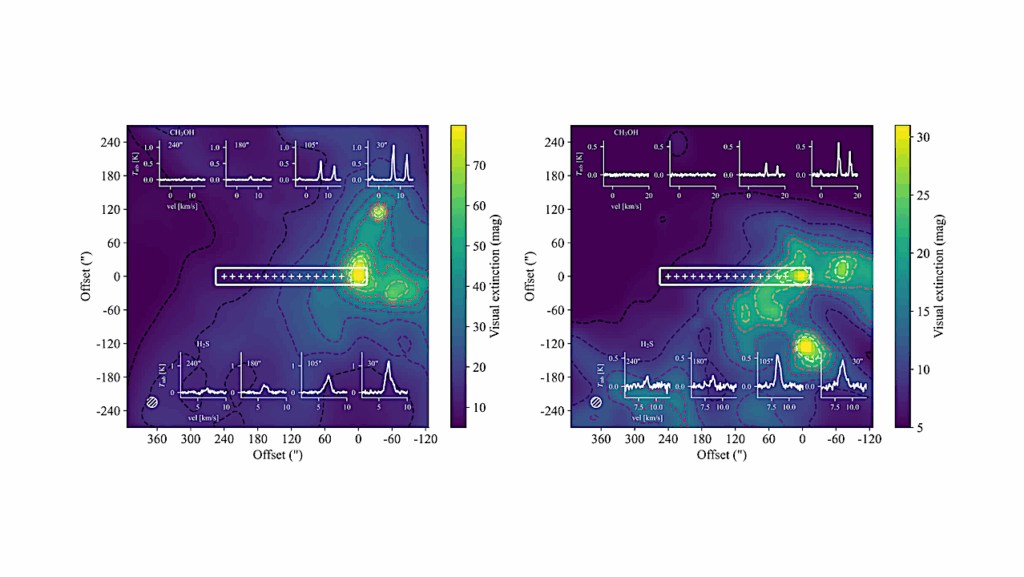Fossil Ice Found In A Meteorite Is The First Direct Evidence Of Ice In Asteroids

High-resolution scans of a 4.6-billion-year-old meteorite have revealed ‘fossilised’ ice. It is the first direct evidence of early asteroids incorporating frozen water into their matrix when they formed.
Some asteroids are known to have contained ice within their rocky structure.
This has been hinted at by observed changes in the minerals that make up the asteroids caused by this water – changes known as aqueous alterations. But how this water was distributed throughout the asteroids and when this ice melted was not fully understood.
By looking at the fine structure preserved in meteorites from asteroids that formed during the birth of our solar system, researchers have been able to see the microscopic pockets that were left behind when the ice they once contained melted. These tiny holes are known as fossil ice.
Along with colleagues in Japan, Dr Epifanio Vaccaro, Curator of Petrology at the Museum, discovered this fossil ice in a meteorite named Acfer 094.
‘I’ve been looking at the matrix of primitive meteorites, the material that holds the structure together,’ explains Epifanio. ‘The meteorite in question dates to roughly 4.6 billion years ago, when the Sun was born and our solar system formed.
‘The matrix of these meteorites is therefore thought to be the starting material from which all the planets formed.’
Epifanio and his colleagues have documented the first direct evidence of ice in the structure of meteorites and, by extension, the asteroids from which they came.
Looking back to the birth of the solar system
The star that we call the Sun formed in the middle of a swirling cloud of interstellar dust and gas.
As this baby star flickered into life, it started to pull in the gas and elements that were floating around it. This process flattened the cloud out around the newly formed Sun, creating what is known as a planetary disc made up of many different materials, including iron, silicates, hydrogen and ice.
As this dust billowed around the star at the centre, it began to coalesce. Bits of the dust started to stick together, incorporating different elements and materials as more and more of these particles began to bind.
This included the ice that was floating beyond what is known as the snow line. This is the point in the planetary disc beyond which solid water ice can exist, because if it were any closer it would be melted by the heat from the developing star.
‘This is starting material from which all the planets, including Earth, came from,’ explains Epifanio.
Some of these newly formed balls of dust and ice compacted into rock and remained small, becoming asteroids. But some of these formations continued to gather debris and material, growing ever larger in size.
As they did so, the centre of the rocky protoplanets started to heat up, setting in motion a process known as differentiation. As the heat melted the metals in the matrix, it caused these heavier elements to sink toward the centre, creating the planet’s core. At the same time, the lighter silicates moved toward the outside, forming the mantle and the crust.
Epifanio adds, ‘So when this happens, all the starting material that we had in the protoplanetary disk is gone as it went through the process of melting and recrystallisation,’ which limits what we can learn by studying the rocks of Earth.
‘This means that if we want to understand what the dust was like as the solar system formed, we need to go back and grab some of the material that didn’t go through this differentiation process.
‘In some meteorites, we have that starting material preserved.’
Fossil ice
In 1990, a small meteorite weighing just 82 grammes slammed into Algeria. Officially called Acfer 094, this meteorite was a piece of a larger asteroid that formed during the early days of the solar system.
Primordial meteorites such as Acfer 094 have been studied before, but the matrix form which they are formed has often been overlooked.
‘The matrix itself is very fine-grained material that holds everything in the meteorite together,’ explains Epifanio. ‘Because it is so fine-grained, it means that in the past the matrix has been really hard to study as we didn’t have sophisticated machines to actually look at it properly.
‘Now, though, we have microscopes with higher spatial resolution so we can look and see these bits more clearly.’
The researchers noticed that the matrix was not uniform. It showed that some regions of the meteorite were incredibly porous. When they removed tiny sections of the matrix no bigger than the head of pin and used high-powered CT scanning, they realised something extraordinary.
‘This porosity was given by the ice that melted away and left the holes,’ says Epifanio.
‘Based on this finding of asteroidial ice, we made a model that tells us how the asteroid grew and how the planets formed. We think that fluffy ice and dust particles came together into bigger bodies beyond the snow line, and then migrated inwards. As they did so, the ice started melting leaving the fossils in its place.’
More advanced technology is allowing researchers to look back and re-examine previous specimens. While Epifanio looked at other meteorites and failed to find any other evidence for fossil ice, he believes that Acfer 094 will not be the only one to contain it.
Understanding how these primitive asteroids came into being helps us to understand where we ourselves come from.
‘They are made up of very similar stuff from which our own planet is formed,’ explains Epifanio. ‘So by studying these meteorites, it helps us understand Earth.’








